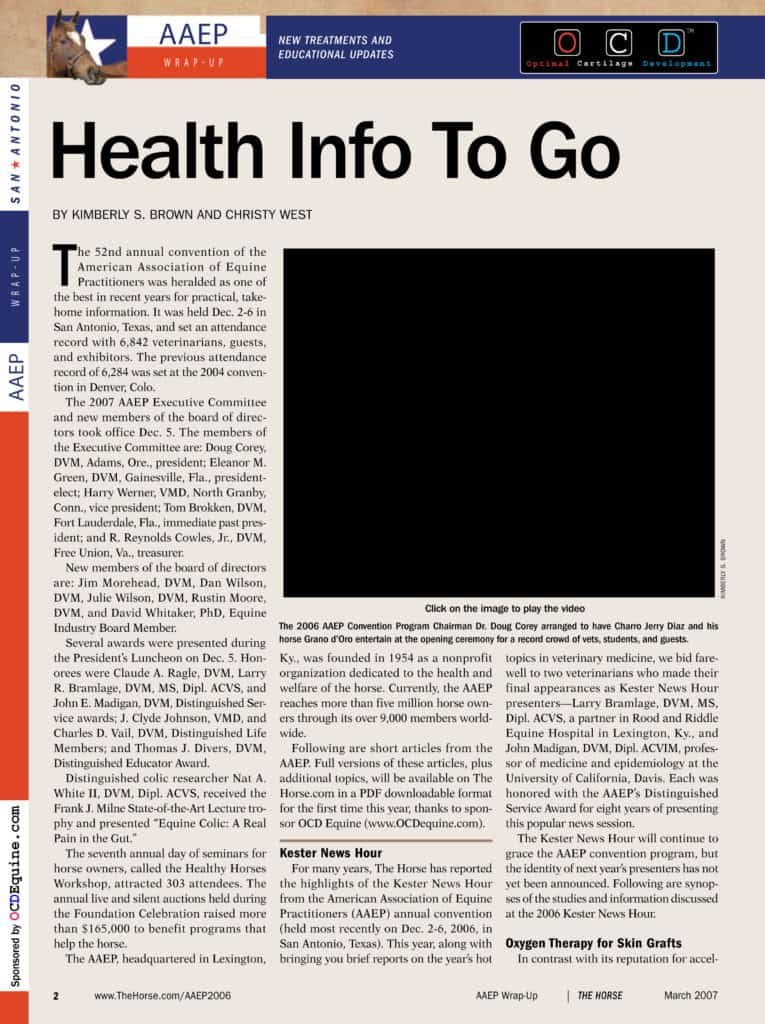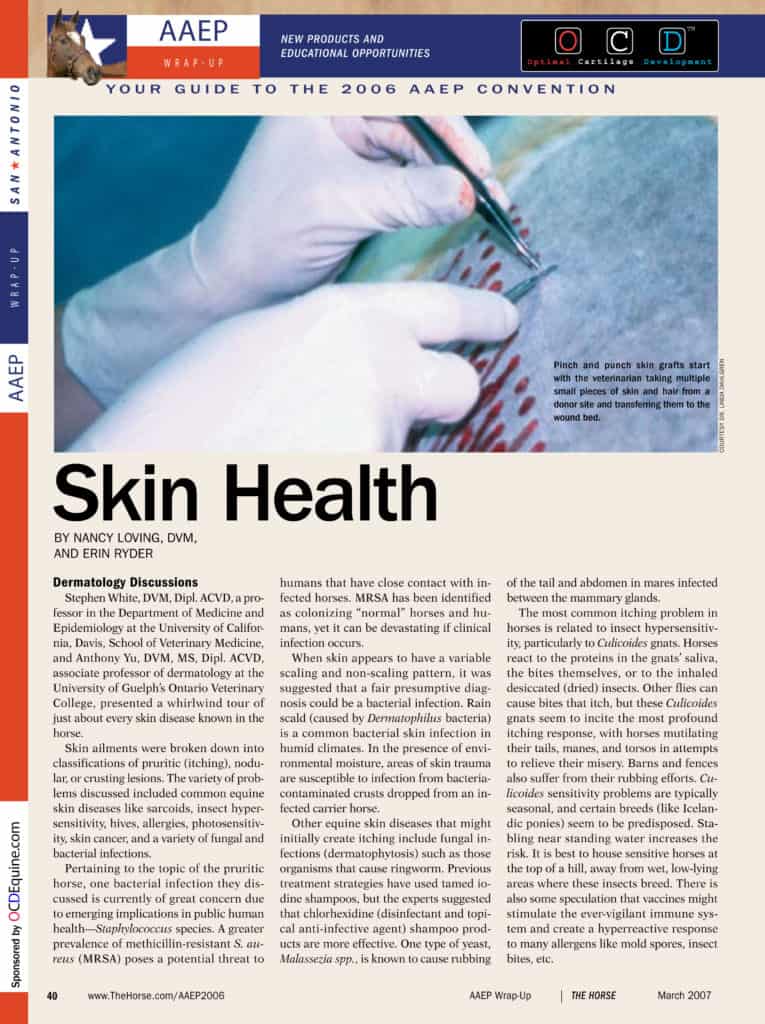Specialized Lameness Evaluation for the Jumping Horse
Horses performing different jobs require specialized examinations for lameness, according to Philippe Benoit, DVM, French jumping team veterinarian from 1991 to 2000. Benoit presented his method for examining jumping horses at the 2006 American

















